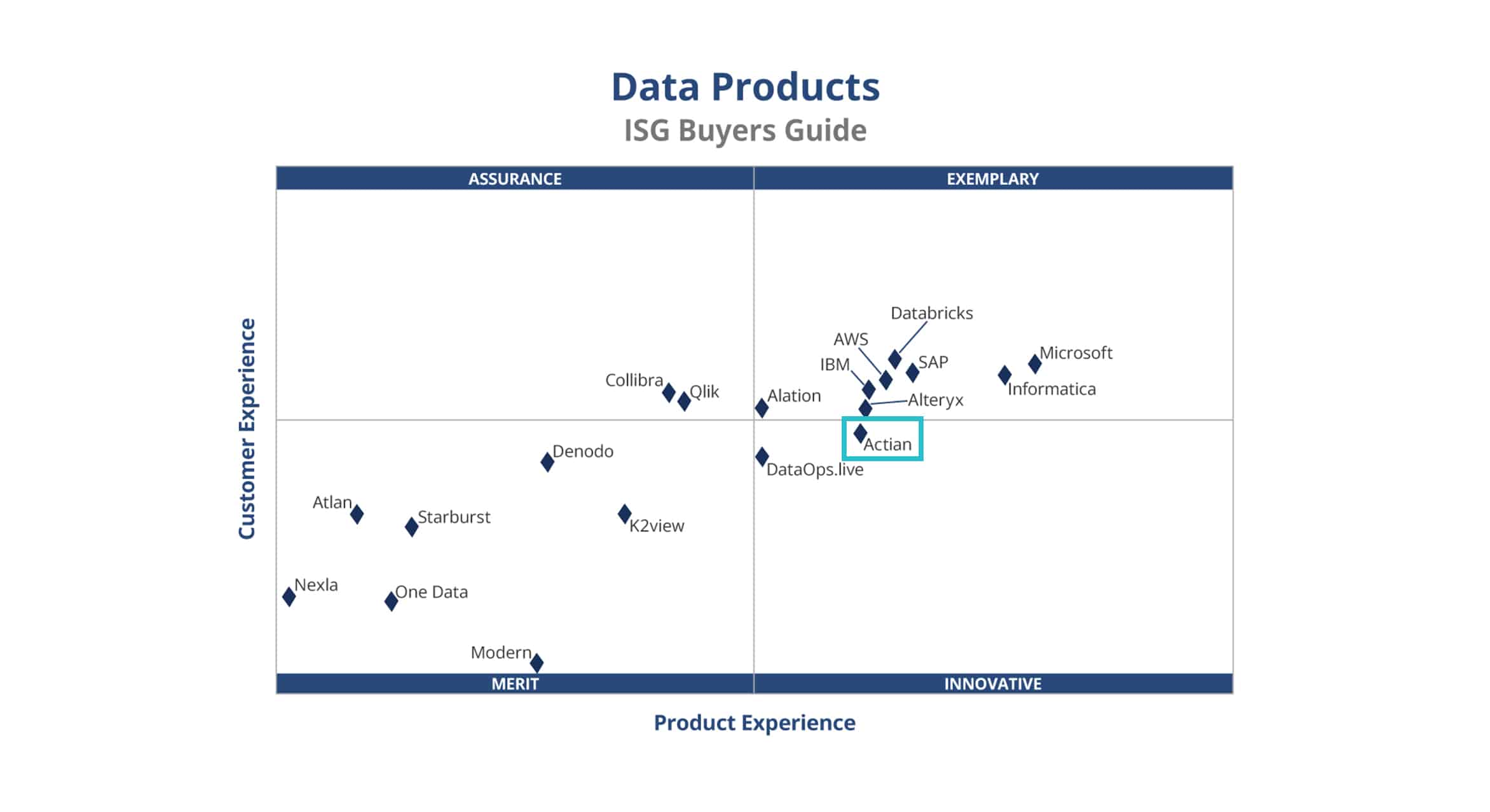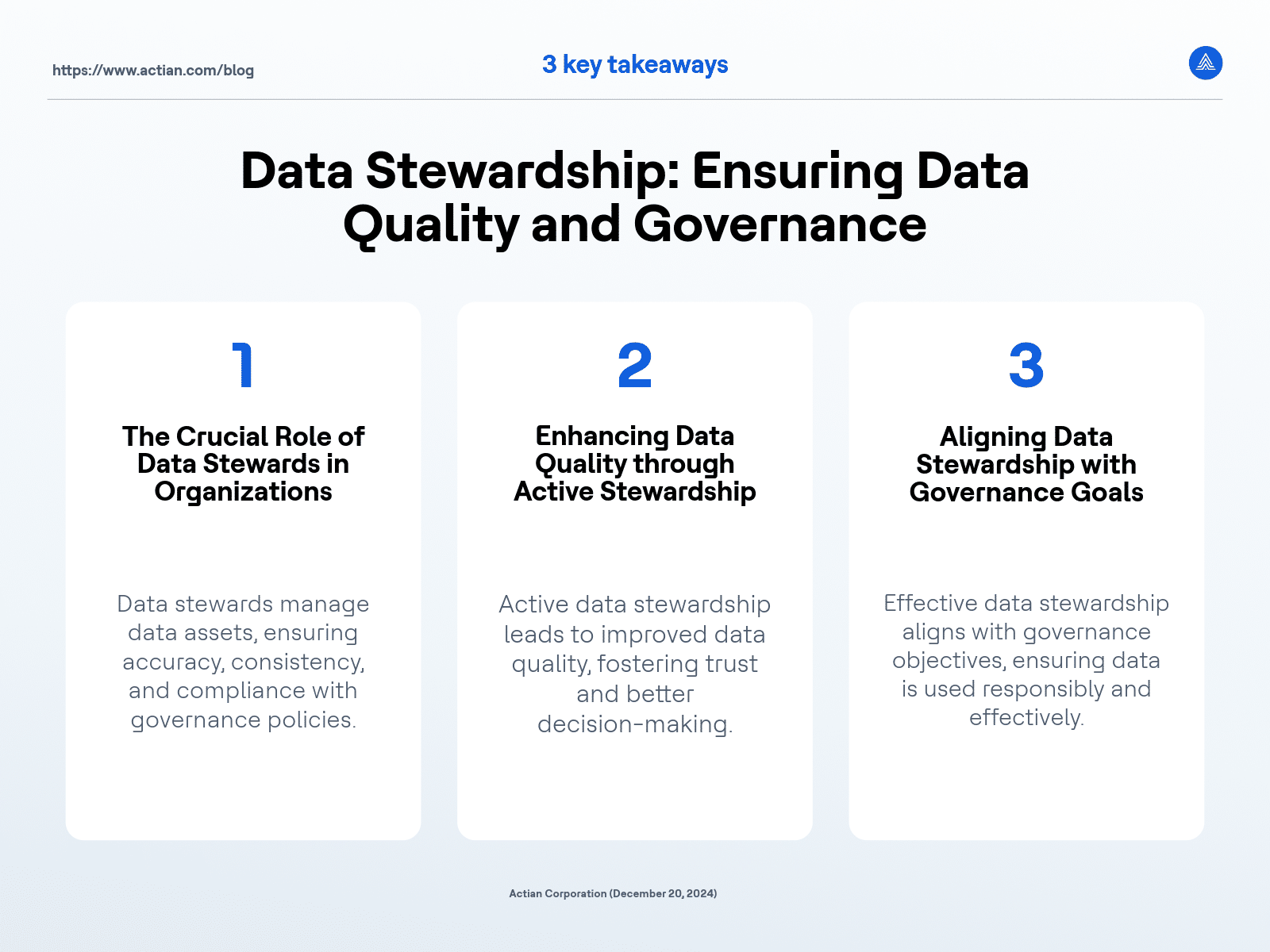Data Democratization Strategy and its Role in Business Decisions
Actian Corporation
January 20, 2025

Data democratization is a cornerstone of modern business strategy, enabling organizations to empower their workforce with access to critical data. By removing barriers to data access, companies can foster a collaborative and innovative environment that drives decision-making and operational efficiency. This comprehensive guide explores what data democratization entails, its benefits, and how to implement it effectively.
Understanding Data Democratization
Data democratization is reshaping how organizations operate in a data-driven world. By granting widespread access to data, businesses can enable employees at all levels to make informed decisions.
What is Data Democratization?
Data democratization refers to the process of enabling access to data across all levels of an organization, empowering employees to utilize data in decision-making without requiring specialized technical skills. It breaks down data silos and ensures that data insights are not limited to technical teams or upper management. By implementing a structured strategy, businesses can create an environment where data is a shared asset, fostering collaboration and innovation.
Benefits and Importance
Data democratization is pivotal for companies seeking a competitive edge in a rapidly evolving market. By distributing data access, organizations can:
- Enhance Agility: Quickly adapt to market changes through data-informed decisions.
- Improve Collaboration: Break down silos and encourage cross-functional teamwork.
- Empower Employees: Equip all team members with the insights they need to contribute meaningfully.
- Boost Innovation: Enable a broader range of employees to explore ideas backed by real data.
- Reduce Bottlenecks: Minimize reliance on data specialists for routine queries, freeing them to focus on complex challenges.
By addressing these needs, data democratization fosters a culture where data-driven decisions are the norm, enabling organizations to stay ahead of competitors.
The Role of a Data Democratization Strategy
A data democratization strategy serves as a blueprint for integrating data into every facet of an organization. It ensures that data is not only accessible but also actionable, empowering teams to make informed decisions. Let’s go over the transformative role of such a strategy in modern businesses and highlights its far-reaching impact.
Accelerating Decision-Making Processes
A well-implemented data democratization strategy reduces the time taken to retrieve and analyze data, allowing businesses to make timely decisions. When data is easily accessible, employees can respond to opportunities and challenges more quickly, giving the organization a competitive advantage. Quick decisions, backed by accurate data, often lead to improved outcomes and increased market responsiveness.
Fostering Innovation Culture
Democratized data unlocks creativity by allowing diverse teams to analyze trends and identify patterns. This decentralized approach to data fosters a culture where innovation thrives, as employees feel empowered to experiment and propose data-driven solutions. Teams are better equipped to brainstorm, prototype, and implement innovative ideas, contributing to overall organizational growth.
Enhancing Operational Efficiency
Operational efficiency is achieved when employees at every level can use data to streamline workflows, reduce redundancies, and optimize resources. A democratized approach ensures that every department can act on insights, leading to coordinated and efficient operations. Whether it’s supply chain optimization, marketing strategy refinement, or customer service enhancements, accessible data makes every process more efficient.
Essential Components of a Successful Data Democratization Strategy
Creating a successful data democratization strategy requires attention to several key components. These elements ensure that the strategy is comprehensive, secure, and user-friendly. Below, we outline the foundational aspects of an effective approach to data democratization.
User-Centric Platforms and Tools
Implementing intuitive tools is critical. Platforms like the Actian Data Intelligence Platform help users access, interpret, and act on data without requiring technical expertise. User-friendly tools reduce the learning curve and make it easier for employees to extract actionable insights from complex datasets.
Solid Data Governance
Data governance ensures data accuracy, security, and compliance. Implementing data governance best practices is crucial for maintaining a reliable data ecosystem. Governance frameworks should define data ownership, accountability, and auditing processes. A well-governed data ecosystem fosters trust among users and ensures compliance with regulatory standards.
Sustained Training and Education
To maximize the potential of democratized data, organizations must invest in continuous training. Employees should be educated on data interpretation, best practices, and the ethical use of information. Training programs should be tailored to different roles within the organization, ensuring that every employee has the skills needed to work effectively with data.
Defined Data Access Protocols
Access protocols ensure the right data is available to the right people at the right time. Role-based access controls (RBAC) and automated workflows can help in managing permissions efficiently and securely. By defining clear access protocols, organizations can balance openness with security, ensuring sensitive data remains protected.
Realizing a Data Democratization Strategy: A Step-By-Step Blueprint
Transforming an organization with a data democratization strategy requires a clear and actionable plan. By following a structured approach, businesses can ensure successful implementation. This section provides a step-by-step blueprint for realizing a data democratization strategy.
1. Assess the Current Data Landscape
Begin by evaluating the current state of data within your organization. Identify existing silos, data flows, and the tools currently in use. This assessment provides a foundation for understanding gaps and areas for improvement. Take inventory of both structured and unstructured data, ensuring that no valuable information is overlooked.
2. Formulate Data Governance Policies
Develop comprehensive data governance policies to safeguard data integrity and security. These policies should outline:
- Who owns the data.
- Who can access specific datasets.
- How data is stored and protected.
Clear governance policies establish a framework for responsible data management, ensuring that democratization efforts are both ethical and effective.
3. Incorporate User-Friendly Tools
Adopt platforms that simplify data analysis for non-technical users. Ensure these tools provide intuitive dashboards, real-time analytics, and easy-to-use interfaces. Prioritize solutions that integrate seamlessly with existing systems to avoid disruptions during the transition. Actian’s Zeenea platform can help you integrate your new data democratization plan effectively.
4. Optimize for Real-Time Data Integration
Real-time data integration ensures that employees always have the most up-to-date information. For insights into the future of data integration, organizations should prioritize systems capable of aggregating data from multiple sources seamlessly. Real-time insights empower teams to act swiftly, turning data into a competitive advantage.
5. Enforce Data Security Measures
Data democratization must be accompanied by robust security measures. A lack of data governance can undermine security, making it essential to implement encryption, multi-factor authentication, and regular audits. Additionally, organizations should conduct periodic vulnerability assessments to address
emerging threats.
6. Encourage Feedback Mechanisms
Gather feedback from users to refine tools, processes, and training programs. User input is invaluable in identifying challenges and opportunities for improvement. Regular feedback helps ensure that the strategy evolves to meet the changing needs of the organization.
7. Implement a Culture of Openness
Foster a culture that values transparency and collaboration. Leaders should champion data democratization efforts and model data-driven decision-making. An open culture encourages employees to embrace data as a core component of their work, driving widespread adoption of democratization initiatives.
8. Build Scalable Infrastructure
Ensure that the underlying infrastructure can scale with organizational growth. For guidance on how to build scalable data platform architectures, consider leveraging cloud-based platforms and modular solutions that offer flexibility and scalability. By investing in scalable infrastructure, organizations can future-proof their data democratization strategy.
Data Democratization FAQs
Frequently asked questions about data democratization highlight its relevance and implementation challenges. Check out our answers to some of these queries to help demystify the concept and provide actionable insights if you are looking to adopt this strategy.
What is Data Democratization?
Data democratization is the process of making data accessible to all employees, enabling informed decision-making at every level.
How Does Data Democratization Impact Security?
By implementing robust governance and security measures, data democratization can enhance security while expanding access.
Who Benefits From Data Democratization?
All stakeholders, from employees to customers, benefit from data democratization as organizations make better decisions and provide improved services.
The Future: Data Democratization and AI
The integration of data democratization and AI is shaping the future of business intelligence. As AI and machine learning advance, the potential of data democratization will expand. AI-powered tools can further simplify data analysis and provide actionable insights to non-technical users. Additionally, predictive analytics and automation will allow businesses to anticipate trends and act proactively. AI will play a role in identifying patterns, detecting anomalies, and delivering recommendations. As these technologies evolve, they will enhance the democratization process, enabling even greater organizational agility and innovation.
In the future, organizations that integrate data democratization with AI will be better positioned to innovate and maintain a competitive edge. The synergy of democratized data and AI-driven insights represents the next frontier in business intelligence.
By embracing data democratization today, businesses can prepare for tomorrow’s challenges and opportunities, ensuring sustainable growth and success. Request a demo to see how Actian’s wide variety of data tools can propel your business to the top of your industry.
Subscribe to the Actian Blog
Subscribe to Actian’s blog to get data insights delivered right to you.
- Stay in the know – Get the latest in data analytics pushed directly to your inbox.
- Never miss a post – You’ll receive automatic email updates to let you know when new posts are live.
- It’s all up to you – Change your delivery preferences to suit your needs.



















